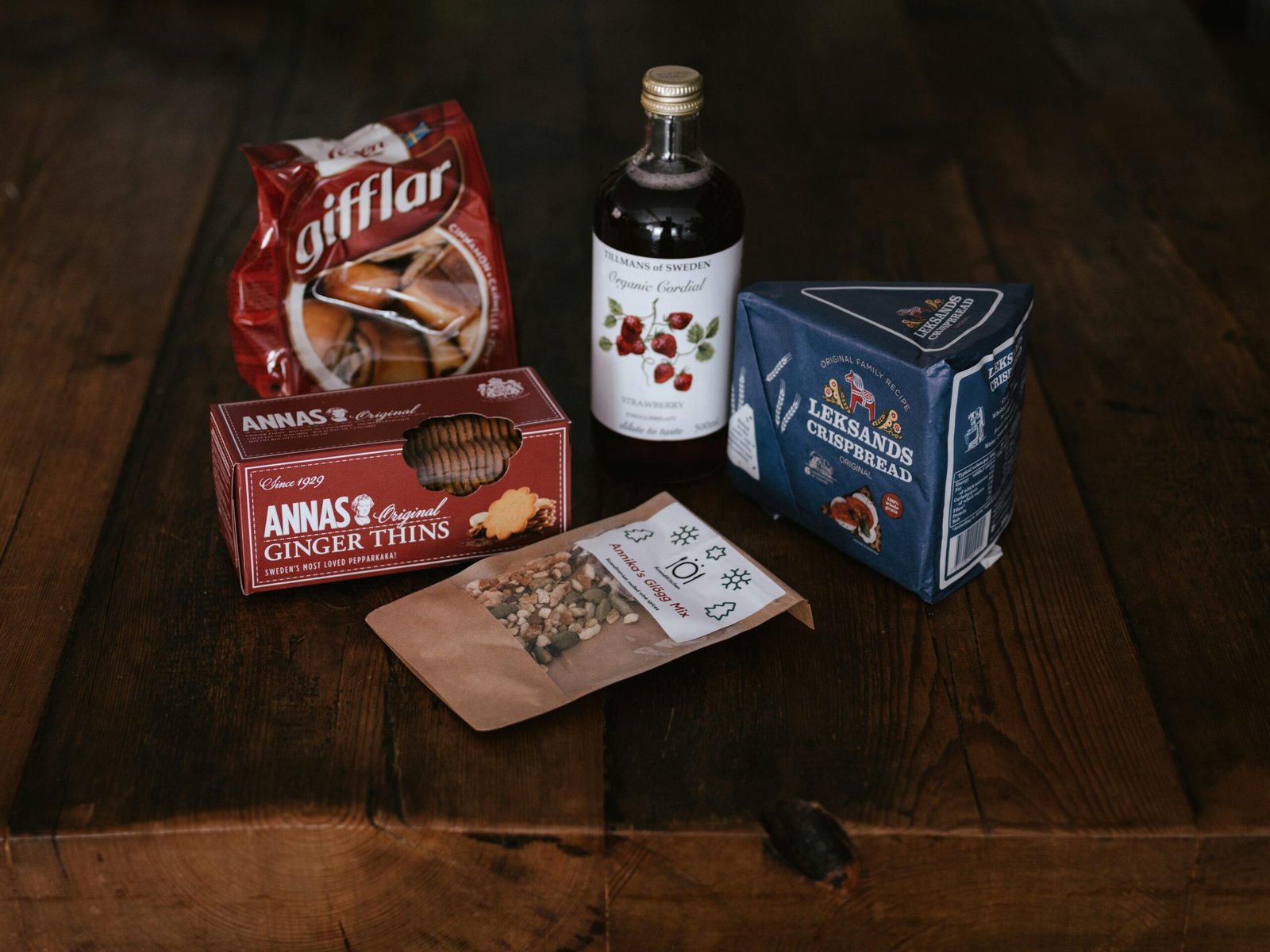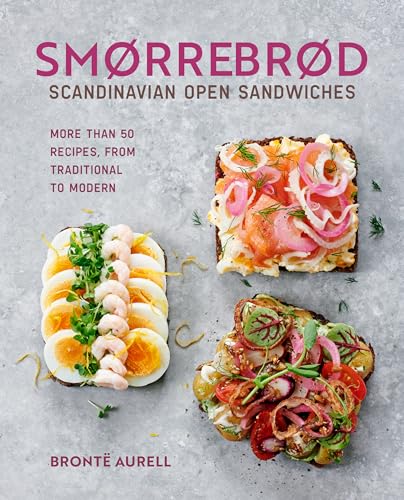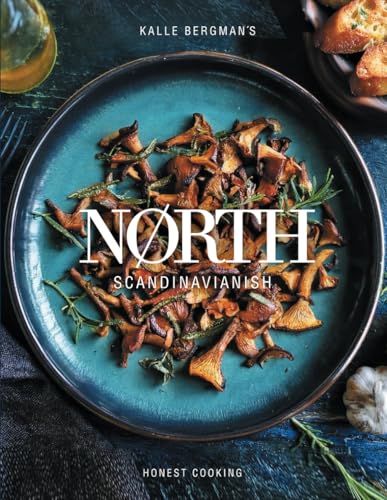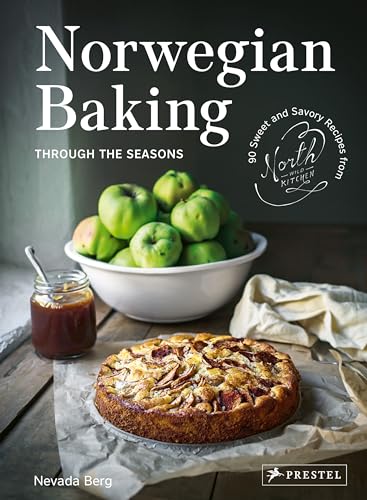Introduction to Scandinavian Cuisine
Scandinavian cuisine embodies a rich tapestry of flavors, techniques, and traditions that reflect the diverse cultures of Denmark, Sweden, Norway, Finland, and Iceland. This culinary heritage is deeply influenced by the region’s geography and climate, which shape the ingredients that are locally available and subsequently used in traditional dishes. The long, cold winters and short summers mean that preserving food has been essential, giving rise to methods such as pickling, smoking, and curing.
One of the key characteristics of Scandinavian cuisine is its focus on simplicity and purity of flavors. Dishes are often prepared with minimal seasoning, allowing the natural tastes of high-quality, fresh ingredients to shine. Common staples include seafood, game, root vegetables, and dairy products. Ingredients such as fish—particularly herring, salmon, and cod—are central to the diet, reflecting the region’s extensive coastlines and fishing traditions. Additionally, locally sourced meats, such as moose and reindeer, showcase the unique fauna of the northern landscapes.

The cultural significance of food in Scandinavia extends beyond sustenance, playing an essential role in family and social gatherings. Seasonal celebrations and communal meals highlight local traditions and foster a sense of community. For example, the Midsummer festival celebrates the arrival of summer with elaborate feasts featuring fresh produce and traditional dishes. Moreover, the renowned “fika” concept in Sweden and similar coffee rituals across Scandinavia emphasize the importance of pausing to enjoy coffee and pastries with friends and family, reinforcing social bonds.
As we delve deeper into this guide, we will explore not only iconic dishes but also the cultural practices and regional variations that define Scandinavian cuisine. From the open-faced sandwiches of Denmark to the rich gravlax of Sweden, each dish tells a story that connects the past with the present, illustrating the enduring legacy and adaptability of this remarkable culinary tradition.
Essential Ingredients in Scandinavian Cooking
Scandinavian cuisine is quintessentially defined by its reliance on fresh, high-quality ingredients that are abundant in the region. Key staples include fish, game, root vegetables, and a variety of berries, each playing a crucial role in traditional dishes. The sourcing of these ingredients is deeply intertwined with the cultural practices and seasonal variations inherent in this part of the world.
Fish is perhaps the most significant component of Scandinavian culinary traditions, with salmon, herring, and mackerel being among the most commonly utilized species. These fish are often sourced from the cold, clean waters of the North Atlantic, promoting both sustainability and optimal freshness. Rich in omega-3 fatty acids, these fish offer a wealth of nutritional benefits while forming the basis of numerous iconic dishes like smoked salmon and pickled herring.
Game meats, such as venison, elk, and duck, are also prominent in Scandinavian fare. Historically, hunting has been a vital activity in rural communities, providing vital sustenance during harsh winters. These meats are typically leaner than domestic livestock, aligning well with the health-conscious trends of contemporary diets. The preparation of game often highlights traditional methods, such as slow-roasting or curing, which enhances both flavor and tenderness.
Root vegetables, including potatoes, carrots, and turnips, are central to Scandinavian cooking, particularly in winter when other fresh produce is less accessible. These hearty vegetables can be prepared in various ways, making them versatile ingredients in stews, baked dishes, or served as sides. Often, they are grown locally, ensuring that meals are both fresh and in season.
Finally, the abundance of berries in Scandinavian regions, like lingonberries and cloudberries, lends a unique sweetness and acidity to dishes. These berries not only supplement the diets of locals but are often transformed into jams and sauces that accompany many traditional meals. The emphasis on seasonal cooking showcases a deep respect for nature’s rhythms, making Scandinavian cuisine uniquely tied to its environment.
Iconic Scandinavian Dishes
Scandinavian cuisine is celebrated for its fresh and sustainable ingredients, often reflecting the harsh climates of the region. Among the most renowned dishes are smoked salmon, herring, reindeer stew, and meatballs, each with a unique heritage and preparation method.
Starting with smoked salmon, this dish is often prepared using traditional methods of cold smoking. The salmon is salted and then exposed to smoke from wood chips, imparting a distinct flavor. Originating from the coastal regions, smoked salmon is typically served on crispbread or with dill, capers, and a squeeze of lemon, embodying the essence of Nordic flavors.
Herring, another staple in Scandinavian kitchens, is frequently pickled or fermented, showcasing the preservation techniques vital in colder climates. This fish can be found in various preparations, including mustard herring and herring in vinegar, and is often accompanied by rye bread and potatoes. The dish reflects centuries of tradition, particularly in Sweden and Denmark, where it has become a staple during festive occasions.

Reindeer stew, or “rennkött,” is a hearty dish that highlights the indigenous Sámi culture of the region. The meat is typically simmered with root vegetables and seasoned with local herbs, creating a warming meal perfect for winter. This stew represents the connection to nature and traditional practices, as reindeer herding has been a vital part of Scandinavian life for generations.
Lastly, Scandinavian meatballs, or “köttbullar,” are perhaps one of the most iconic comfort foods, recognized worldwide. These meatballs are made from a mixture of ground beef and pork, seasoned with spices and pan-fried to perfection. They are traditionally served with lingonberry sauce, creamy gravy, and mashed potatoes, demonstrating the simplicity yet elegance found in Scandinavian dining.
Exploring Traditional Scandinavian Beverages
Scandinavian cuisine is not only characterized by its dishes but also by a rich array of traditional beverages that complement meals and enhance the culinary experience. Among the most notable is aquavit, a flavored spirit prevalent in Denmark, Norway, and Sweden. Aquavit is produced through the distillation of fermented grain or potato mash, and it is typically flavored with anise, dill, or caraway. Traditionally, this spirit is enjoyed chilled and is often paired with pickled herring, a classic dish in Scandinavian cuisine. The cultural significance of aquavit is profound, as it is often consumed during celebratory events and family gatherings, reflecting the communal nature of Scandinavian dining.
Another prominent beverage in the region is glögg, a spiced mulled wine that is particularly popular during the winter months and the festive season. Made from red wine, spices such as cinnamon and cardamom, and sometimes fortified with spirits like vodka or aquavit, glögg is a warming drink often enjoyed with gingerbread cookies. Its rich flavor profile complements traditional Scandinavian desserts, creating a harmonious balance between sweet and spice. Glögg embodies the essence of winter gatherings, bringing people together around the cozy atmosphere of holiday celebrations.
Additionally, the rise of Scandinavian craft beers has transformed the beverage landscape. Taking advantage of the abundant natural resources, many breweries are now crafting unique beers that reflect local ingredients and traditional brewing methods. With a focus on quality and innovation, these beers vary from light lagers to rich stouts, providing a wide range of flavors that pair seamlessly with hearty Scandinavian dishes like gravlax or roasted meats. The craft beer movement not only showcases the ingenuity of Scandinavian brewers but also represents a growing trend towards local and sustainable dining practices.
The Sweet Side: Scandinavian Desserts
Scandinavian cuisine is renowned for its hearty dishes, but it would be remiss not to shine a spotlight on its delightful desserts. Among the beloved sweets are cloudberry jam, krumkake, and semla, each with rich histories and cultural significance. These desserts not only satisfy the sweet tooth but also embody the traditions and celebrations within Scandinavian societies.
Cloudberry jam, often a staple in Northern Scandinavian households, is made from the elusive cloudberry, a golden-orange berry that thrives in the tundra regions. This tart yet sweet jam is frequently enjoyed on warm bread, pancakes, or alongside traditional cheese. It represents the essence of summer for many, as cloudberries are typically harvested in the wild, symbolizing a deep connection to nature and local heritage.
Krumkake, another popular treat, is a delicate Norwegian waffle cookie that is rolled into a cone shape. Traditionally prepared during festive seasons, particularly Christmas, these crisp cookies are often filled with whipped cream and served as a delightful dessert. The art of making krumkake is cherished, with families passing down recipes through generations. For those interested in trying their hand at this culinary endeavor, a simple recipe includes flour, eggs, sugar, and cardamom, which brings a fragrant twist to the dish.
Semla, or “fastlagsbullar,” is a traditional Swedish pastry usually filled with almond paste and whipped cream, and it is often served during Lent. The combination of soft cardamom bread and rich filling makes it a favorite among many. Eating semla is often a ritual in itself, with a historic background tied to the pre-Lenten celebrations where indulgence is encouraged before the fasting season.
These desserts showcase the diverse and rich culinary landscape of Scandinavia, providing a glimpse into the traditions that make each treat special. Whether you are enjoying them at a summer picnic or during winter holidays, these sweet delicacies symbolize both festivity and the bonds of family and culture that define Scandinavian life.
Fika Culture: A Unique Scandinavian Tradition
In Sweden, the coffee break known as ‘fika’ transcends the simple act of consuming coffee or tea; it is a cherished tradition that embodies the values of social connection, pause, and appreciation of life’s small joys. Fika serves as an essential ritual in everyday Swedish life, offering a respite from the relentless pace of modern living. Typically enjoyed with the accompaniment of sweet treats, such as cinnamon buns or cookies, this intimate gathering can occur at any time of the day, becoming a cornerstone of both personal and professional routines.
The very essence of fika lies in its emphasis on quality time spent with friends, family, or colleagues. During this pause, conversations flow freely, fostering connections and strengthening relationships. It is not just about food and drink but also about taking a moment to step back, reflect, and simply enjoy the moment. This practice invites individuals to slow down rather than rush through life, encouraging a sense of mindfulness that is often lost in today’s hectic world.
The Scandinavian ethos is deeply intertwined with the concept of fika. This tradition promotes a balanced lifestyle, reminding individuals to prioritize mental well-being amidst their busy schedules. In workplaces, the practice of fika encourages collaboration and communication, often leading to enhanced productivity and a sense of community among employees. Similarly, in social settings, it transforms casual meetings into meaningful gatherings, reinforcing social ties and building a sense of belonging.
In conclusion, fika represents more than mere refreshments; it is a vital cultural touchstone that illustrates the Swedish commitment to social interaction and appreciation for life’s simple pleasures. By integrating this tradition into daily life, one can embrace the Scandinavian way of living, ultimately enriching both personal experiences and relationships.
Seasonal and Regional Variations in Scandinavian Cuisine
Scandinavian cuisine is marked by its remarkable diversity, which is significantly influenced by the seasons and regional variations. This culinary style draws upon local ingredients that are harvested or available throughout different times of the year, resulting in plates that are both vibrant and comforting. For instance, summer in Scandinavia heralds long days and an abundance of fresh produce and seafood, leading to the preparation of dishes like the traditional summer smorgasbord. This celebratory meal features an array of seasonal offerings, including herring, fresh berries, new potatoes, and crisp salads that showcase the flavors and freshness of the region.
Conversely, winter in Scandinavia evokes a shift toward hearty and warm foods that provide comfort during the colder months. Dishes such as stews, casseroles, and baked goods are prevalent, often incorporating preserved ingredients like fermented fish, cured meats, and root vegetables. For instance, the ability to utilize pickled herring or sour cream gives a comforting flavor profile to winter meals. The practice of slow-cooking meats and using spices reflects the traditional ways of creating warmth and nourishment during the frigid season.
Moreover, regional traditions play a significant role in shaping Scandinavian cuisine. Each country—Denmark, Sweden, Norway, and Finland—has unique culinary customs and ingredients that contribute to diversity. For example, Sweden is known for its famous meatballs, while Norway prides itself on its rich fish dishes. The use of lingonberries in Swedish cooking, for instance, highlights the tartness that beautifully complements savory dishes. Through the integration of local produce, seafood, and traditional methods, Scandinavian cuisine embodies a strong connection to the environment, providing a delicious reflection of the region’s cultural identity.
Modern Trends in Scandinavian Cuisine
Scandinavian cuisine has undergone a significant transformation in recent years, marked by the emergence of the New Nordic movement. This culinary trend, which advocates for a return to simpler, natural ingredients, prioritizes sustainability and the use of seasonal produce. Chefs in the region have embraced this philosophy, leading to a reimagining of traditional dishes while maintaining their cultural essence.
One of the hallmarks of the New Nordic movement is the emphasis on local ingredients. Chefs source their produce from nearby farms and foraged goods, ensuring that meals are not only fresh but also environmentally responsible. This focus on locality supports sustainable agriculture and reflects a growing consumer demand for transparency in food sourcing. By utilizing seasonal ingredients, chefs craft dishes that celebrate the flavors of each season, enhancing the dining experience through freshness and quality.
Prominent restaurants, such as Noma in Copenhagen, have gained international acclaim for their innovative approach to Scandinavian cuisine. Headed by renowned chef René Redzepi, Noma showcases a constantly evolving menu that highlights indigenous foods and unique preparation techniques. The restaurant’s commitment to sourcing ingredients only from the Nordic region has inspired a generation of chefs to explore the rich culinary heritage of Scandinavia while pushing its boundaries.
In addition to Noma, establishments like Frantzén and Oaxen Krog have also contributed to the modern reinvention of Scandinavian cuisine. These restaurants not only emphasize traditional cooking methods but also present dishes as artistic expressions, blurring the lines between gastronomy and visual art. As more chefs and culinary enthusiasts advocate for these principles, Scandinavian cuisine continues to evolve, gaining recognition worldwide for its creativity and depth.
Where to Experience Scandinavian Cuisine
Exploring authentic Scandinavian cuisine offers a unique journey into the flavors and traditions of this Nordic region. To fully experience delectable dishes, one should consider visiting key cities known for their culinary scenes. In Stockholm, the renowned restaurant Pelikan stands out for its traditional Swedish fare, featuring iconic dishes such as herring and meatballs. Similarly, in Copenhagen, Noma has long been hailed as one of the world’s best restaurants, brilliantly showcasing New Nordic cuisine through local ingredients and innovative cooking techniques.
Oslo provides a blend of historical and modern dining experiences. For a taste of Norwegian seafood, Fiskeriet is a must-visit, where expertly prepared and sustainable fish dishes can be enjoyed amidst a vibrant atmosphere. Additionally, the annual Oslo Food Festival is an excellent way to indulge in Scandinavia’s culinary diversity, combining various artisanal food productions with local traditions.

Local markets also serve as an authentic way to experience specific Scandinavian flavors. The Saluhall in Stockholm offers a delightful array of food stalls representing the best of Swedish delicacies, while the Torvehallerne food market in Copenhagen captivates visitors with fresh produce, specialty cheeses, and baked goods. These markets frequently host demonstrations and tastings, making them ideal for both tourists and locals alike.
For those who wish to recreate these experiences at home, consider enrolling in cooking classes that focus on Scandinavian dishes. Many online platforms offer workshops where you can learn to prepare delicacies such as cardamom buns or gravlax. Furthermore, specialty ingredient shops, often found in metropolitan areas, provide essential Nordic staples such as rye flour and cured fish. By sourcing these ingredients and recipes, food enthusiasts can immerse themselves in Scandinavian cuisine, sharing the flavors of the North with family and friends.





